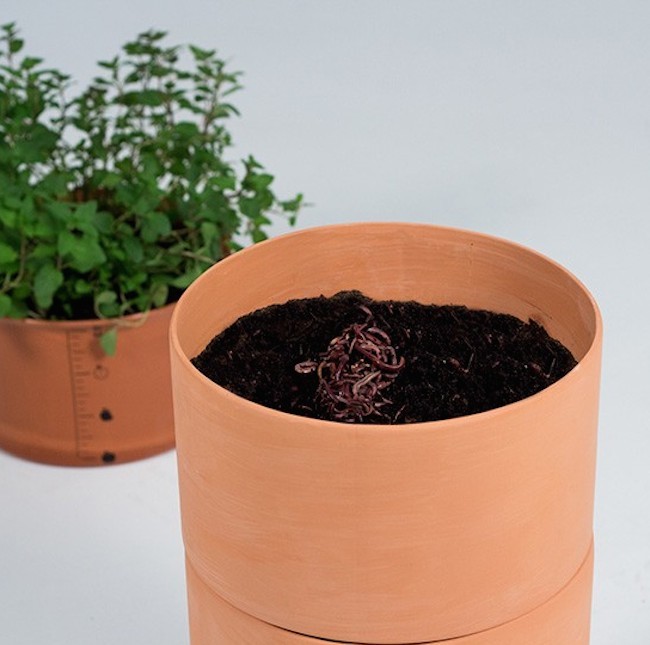LISBON, Portugal — For his final project in product design at the University of Lisbon, Marco Balsinha used contemporary ceramics to make vermicomposting (composting with worms) go a little smoother. Essentially, the Uroboro makes it feasible to compost with worms inside your home.
The set is, off the bat, far more visually appealing than most home composting systems (picture the trash heap from Fraggle Rock). It replaces that image with a clean cylinder of clay that turns into a planter. Natural properties of clay make it additionally useful for blocking out compost fumes, leakage and the heat that occurs naturally in decomposing garbage. These all balance against the life cycles of the worms chewing through your trash, giving them a safe, habitable environment to do their thing.

From the designer:
Uroboro is a modular system with 4 different pieces of red clay that can be extended by adding further pieces up without conditioning the mobility of earthworms throughout the whole system and it uses the properties of clay as a mediator of odour, moisture and temperature.
The project was helped by mentoring professors José Frade and Luís Pessanha. The designer said he tested the design out in a variety of homes and enjoyed positive results.
Marco Balsinha is a Portuguese Designer, with a B.A. degree in Product Design from Faculty of Fine Arts – University of Lisbon (2003-2008) and recently completed a Master in Product Design at the ESAD, Caldas da Rainha (2012-2015), according to his biography. He presented his Master’s dissertation in late 2015 with the title: Uroboro – A domestic ceramic vermicomposter.

He worked as a Product Designer and Head Designer at Abrakadabra (2008-2013), with an independent manufacturing unit and a manufacturer of Furniture for kindergarten. Marco has become an independent designer and has been awarded in several international design competitions. Marco’s research interests focus on innovative environmental sustainability solutions and the optimisation of production lines using design as key factor to achieve its purpose.
Do you love or loathe this use of contemporary ceramics? Let us know in the comments.

Photographs courtesy of the designer.

Add your valued opinion to this post.